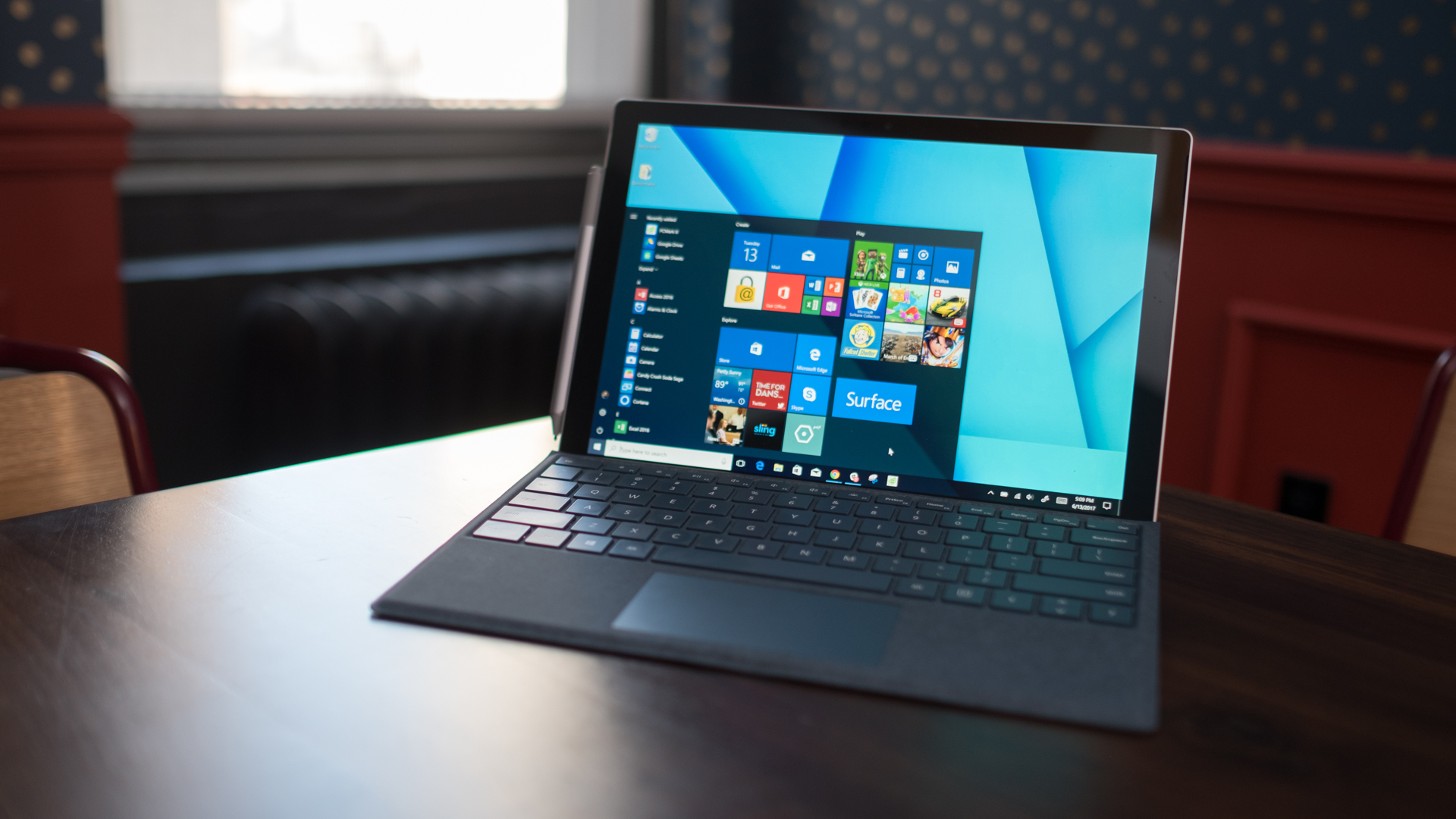TechRadar Verdict
We’re confused as to why Microsoft didn’t give this the Surface Pro 5 moniker, since it only received the largest improvement on a Surface we’ve seen so far. Despite losing the included Surface Pen, the Microsoft Surface Pro 2017’s massive leap forward helps it retain our coveted Recommended award.
Pros
- +
Hugely improved battery life
- +
Much better Surface Pen
- +
Comfier, punchier Type Cover
Cons
- -
Surface Pen pulled from package
- -
Only Core i7 can challenge A10X
Why you can trust TechRadar
Did you know the 2017 Surface Pro isn’t the newest Surface on the block? Read our review of the Microsoft Surface Pro X, Microsoft’s most recent Surface release.
The Microsoft Surface Pro 2017 is still among the best Windows tablets around. By building upon the key features that made the much-adored Surface Pro 4 and other premium Windows tablets so popular, the Microsoft Surface Pro 2017 carries on the legacy of the Surface Pro line.
That’s while also bringing its own strengths to the table. The Microsoft Surface Pro 2017 boasts ingenious design updates that have proven to be future-proof. It’s also helped demonstrate that Windows 10 is much more capable than many perceive it to be.
Both the Surface Pro 6 and Surface Pro 7 have unfortunately failed to offer the generational leap many have been anticipating. So, almost three years after its release and even in the shadows of its successors, the Microsoft Surface Pro 2017 remains to be an impressive tablet and a compelling purchase for Windows 10 laptop users. Even with its numbers dwindling, it’s still worth scouring the Internet for.
Here is the Surface Pro 5 configuration sent to TechRadar for review:
CPU: 2.5GHz Intel Core i7-7660U (dual-core, 4MB cache, up to 4GHz with Turbo Boost)
Graphics: Intel Iris Plus Graphics 640
RAM: 16GB LPDDR3
Screen: 12.3-inch, 2,736 x 1,824 PixelSense display (Contrast ratio: 1,300:1, 100% sRGB color, 10-point multi-touch, 3:2 aspect ratio)
Storage: 512GB SSD (PCIe 3.0)
Ports: 1x USB 3.0, mini DisplayPort, microSDXC card reader (UHS-I), headphone/mic jack
Connectivity: 802.11ac Wi-Fi (2 x 2 MIMO), Bluetooth 4.1 (Low Energy)
Cameras: 8MP rear-facing, auto-focus camera (1080p HD); 5MP front-facing, 1080p HD camera
Weight: 1.73 pounds
Size: 11.5 x 7.93 x 0.33 inches (W x D x H)
Pricing and availability
Even following the release of the Microsoft Surface Pro 7, Microsoft hasn’t officially drop the prices for the Microsoft Surface Pro 2017 in the Microsoft online store. However, Amazon and other third-party sellers are offering excellent discounts, which you bring you massive savings if you’re opting for this Surface Pro model.
Staying in line with previous models of the Surface, the Microsoft Surface Pro 2017 starts at $749 (£749, AU$1,129), and the price goes up from there. For that entry-level price, you’re taking home a device packing a Kaby Lake Intel Core m3 processor, 4GB of memory and 128GB of SSD storage.
This base configuration should be adequate enough for users who don’t really do demanding computing tasks. However, if you have a workload like ours, that’s hardly sufficient power to get the job done. If that is the case, we recommend going with a Surface Pro configuration with at least an Intel Core i5 processor, more RAM and SSD space.
Sign up for breaking news, reviews, opinion, top tech deals, and more.
In the US, the Surface Pro 5 maxes out at $1,449. Splurging that much will get an Intel Core i5 processor with 256GB SSD and 8GB of RAM. This configuration should power you through most of your productivity tasks without too much hassle, though we’d be careful about filling up your SSD with too many photos and videos.
At the moment, a configuration equipped with an Intel Core i7 chip is not available in the US, unless you’re buying it from Amazon, which still offers more configurations and at discounted prices at that. It is, however, available for purchase in the UK, with the 256GB SSD and 8GB RAM priced at £1,119, and the more powerful 1TB SSD and 16GB RAM setting you back a substantial £1,611.
Put up against some of the Surface Pro 5’s competitors, like the latest iPad Pro 11-inch, Apple start things off at $799 (£769, AU$1,229) for a tablet with Apple’s A12X Bionic processor and 64GB of SSD storage. Meanwhile, the maxed-out version retails for $1,549 (£1,519, AU$2,349) with 1TB of space and the same processor.
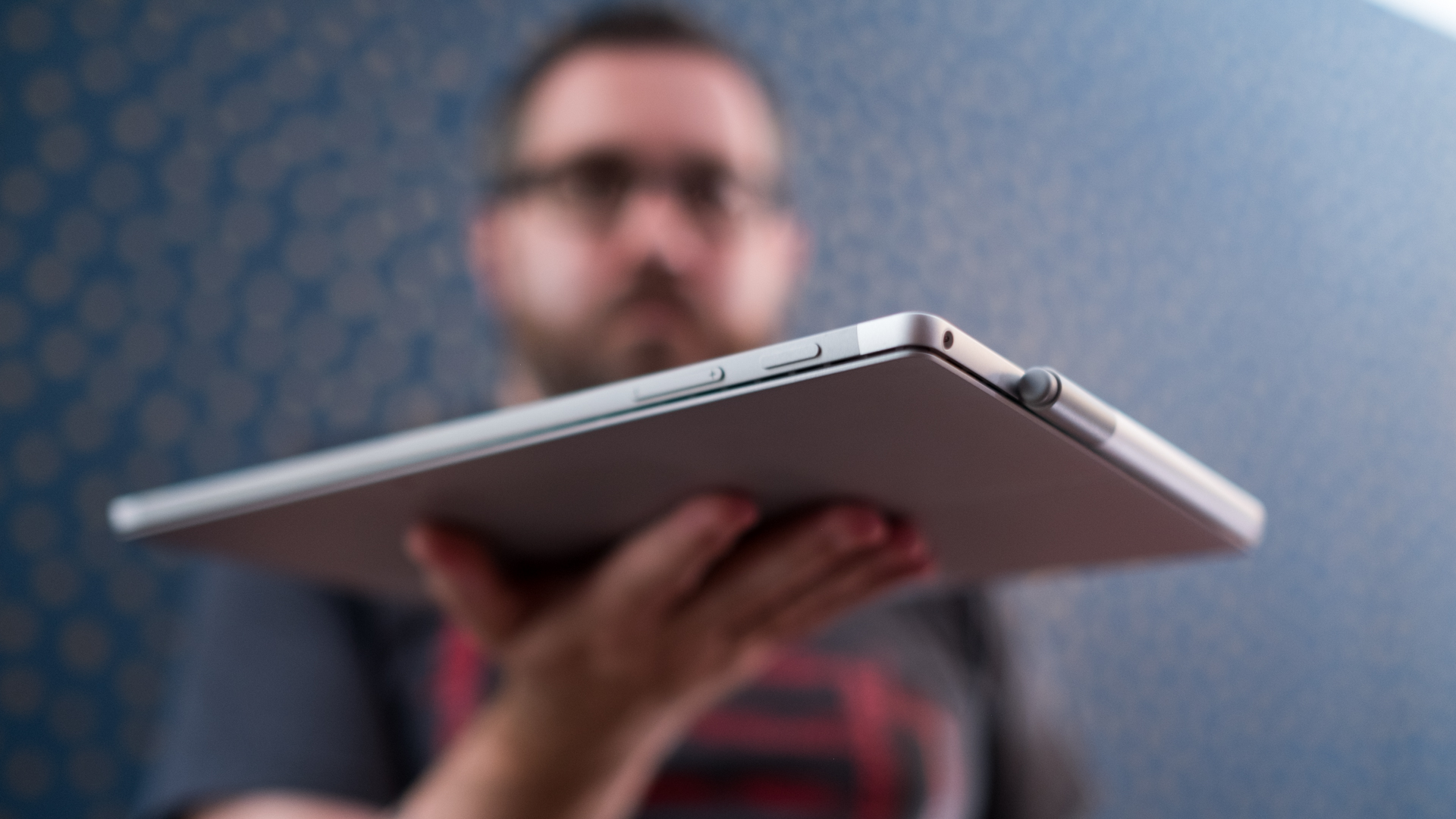
The Samsung Galaxy Book 2, alternatively, starts at $999 (about £780, A$1,440) for the 12-inch configuration with a 128GB SSD and 4GB of RAM powered by a Qualcomm SDM850 processor. This model is, sadly, unavailable in the UK and Australia.
Both the 10.6-inch and 12-inch Samsung Galaxy Book machines are on hand in the UK, but currently, these are only available to buy through third-party retailers. In the US, the 12-inch version, equipped with a 7th Gen Intel Core i5 processor, 4GB RAM and 128GB SSD, is pricier at $1,299 (about £1,020, A$1,873).
When you take into consideration that the new Surface Pro is sold sans the Type Cover or Surface Pen in the box, Samsung’s tablet begins to look like a much more appealing purchase than both the Surface Pro and accessory-challenged iPad Pro. So, it is unfortunate that neither its performance nor its design is especially impressive.
While Microsoft not including the Surface Pen out of the box seems to indicate that the Microsoft Surface Pro 2017 costs more to make than its forerunner, a unit purchased with both the Pen and Type Cover would exceed the price of an equivalent Galaxy Book by only $100. Still, we’d love to see the pen included in the initial purchase.
Bear in mind, though, that while the Microsoft Surface Pro 2017 is still available for purchase, it has been succeeded by the newer Surface Pro 6. That means that you should be able to find it for significantly less than list price.
- Need to save some cash? We've tracked down the best Surface Pro deals
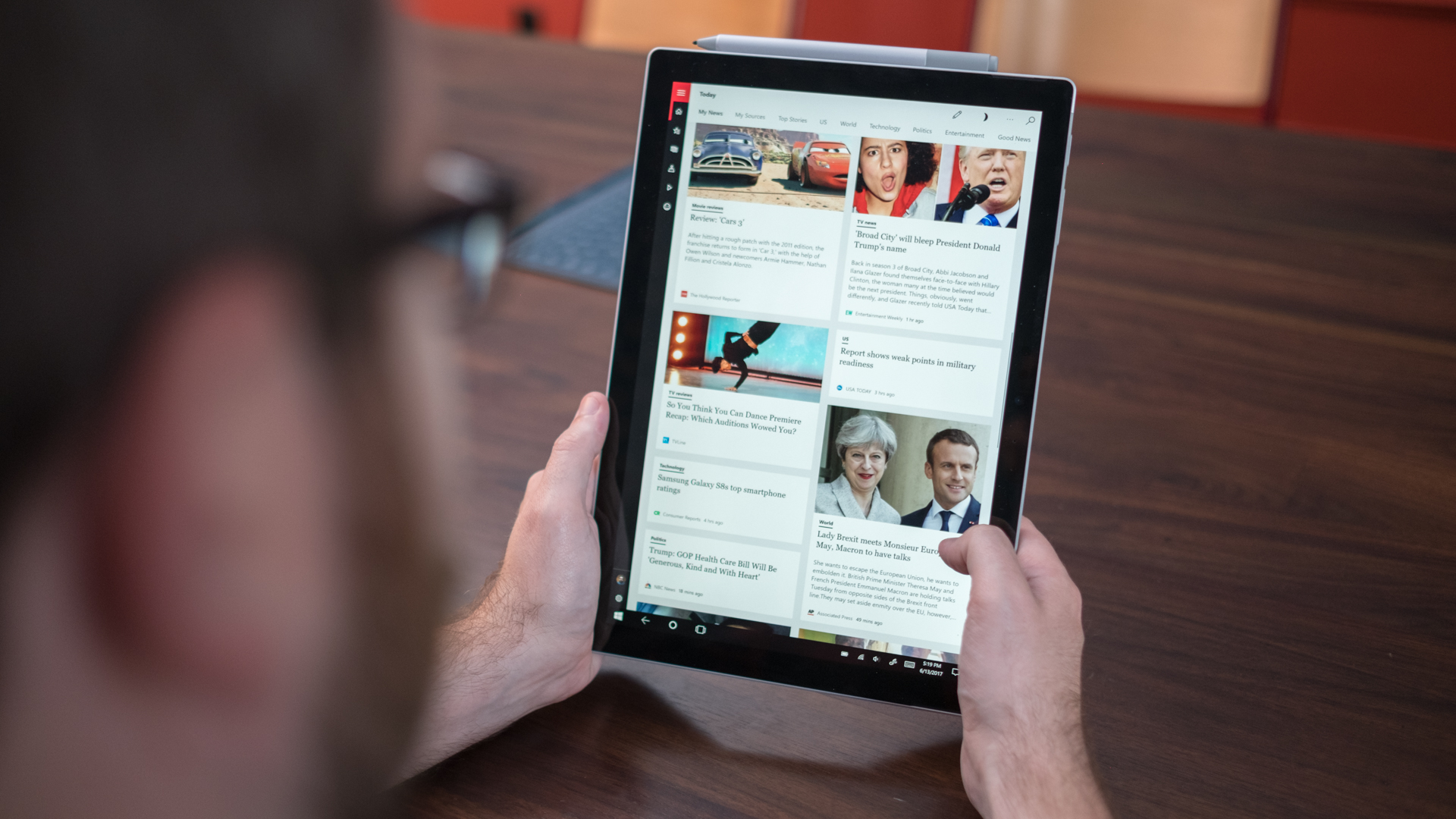
Design
At first glance, the 2017 Surface Pro 5 closely resembles the Surface Pro 4. It has the same stunning 12.3-inch PixelSense touch display with a 2,736 x 1,824 pixel resolution.
However, a closer look uncovers a few key distinctions. For one, the magnesium-aluminum alloy frame is considerably rounder at the edges. If you were a Surface Pro 4 user before going for the Microsoft Surface Pro 2017, your fingers may even feel the difference before your eyes see them.
There’s also the hinge, which has been made that much better on the Surface Pro 5, taking cues from the Surface Studio. The hinge now bends back further than ever before, thanks to a new “Studio mode” that makes for a narrower, 165-degree angle that’s ideal for artists. To that end, the hinge looks especially different, obviously utilizing new parts to make this more dramatic angle possible. It does, however, operate in exactly the same way.
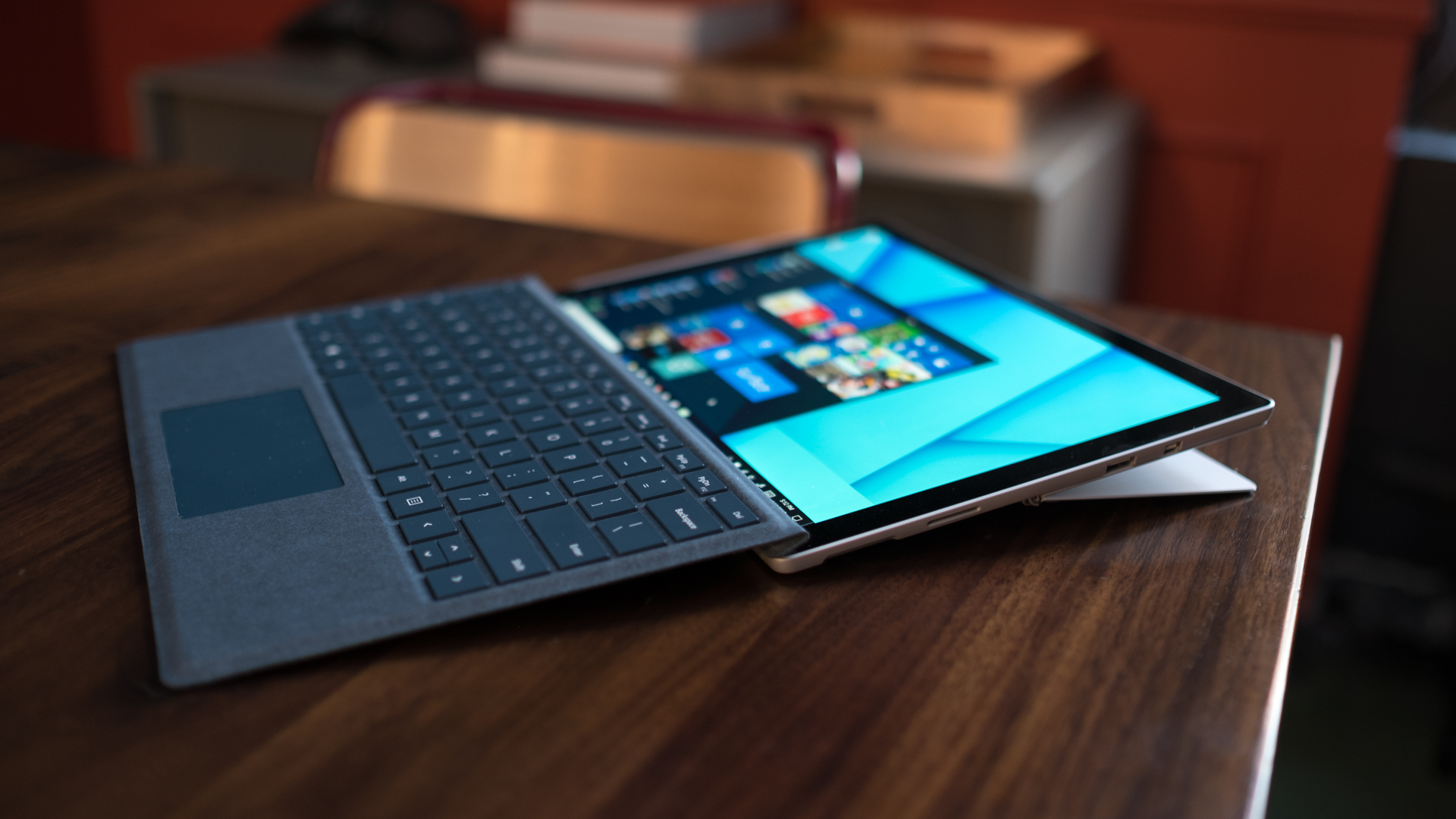
Another change worth noting here is the thermal design, which Microsoft also improved, making both the Core i5 and Core m3 versions fanless devices.
The new Alcantara Type Cover is a notable upgrade in comfort over the previous generation, and it’s undeniably worth the slight upcharge in asking price over the microfiber cloth version. The keys feel like they’re deeper set and bouncier than ever coming back from a press. Plus, the material looks like it’s robust enough to last for a long time. Those who want to stay away from neutral colors will be happy to know that burgundy and cobalt blue colors are now also on hand.
At the end of the day, the Microsoft Surface Pro 2017 measures at the same 0.33 inches (8.4mm) of thickness as its precursor, with its weight of 1.73 lbs (786g) also the same as before. Considering that Microsoft managed this while still improving battery life by up to 20%, this is quite a notable feat, indeed.
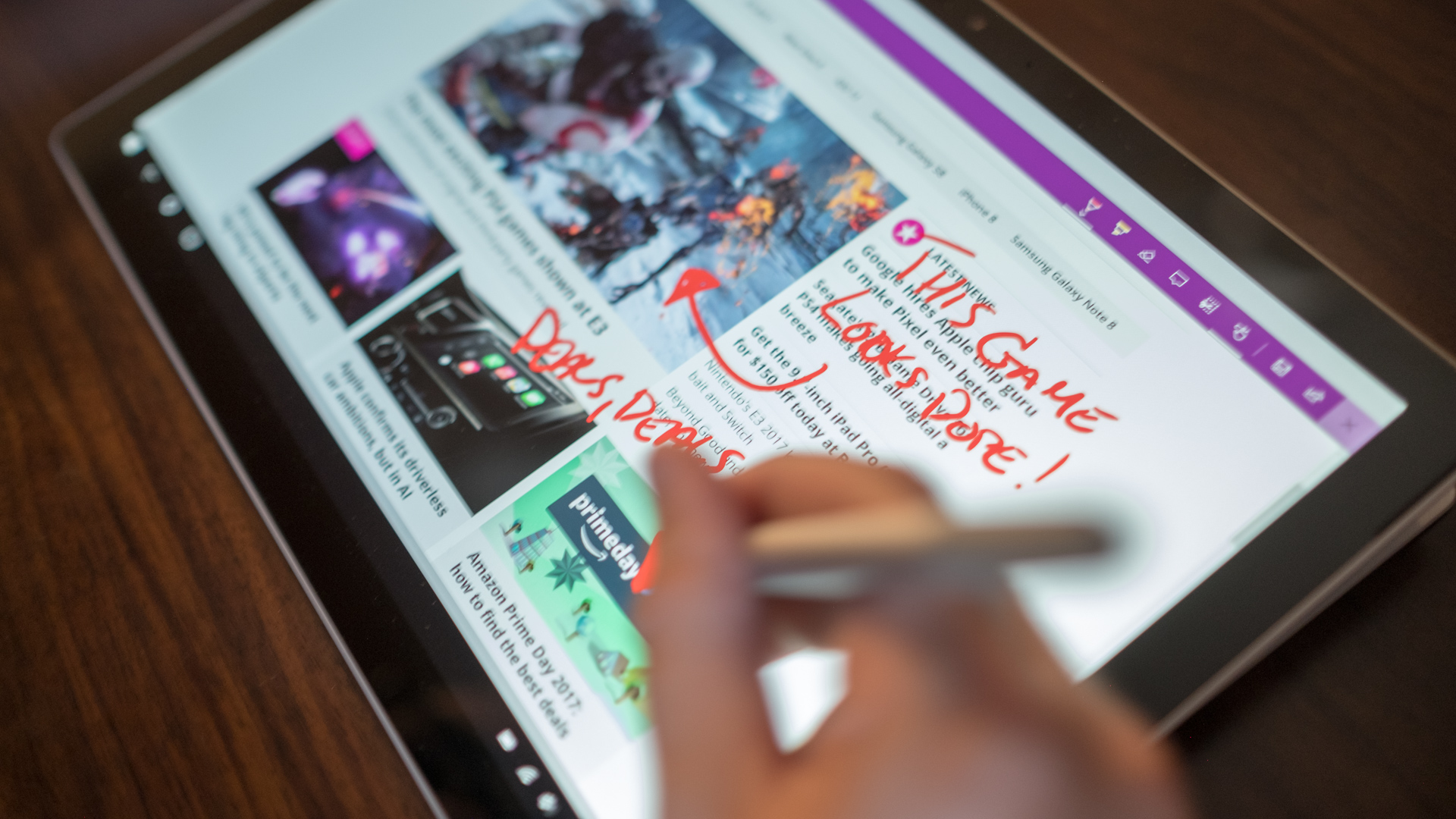
Surface Pen gets a big boost
Why the Microsoft Surface Pro 2017 wasn’t given the ‘5’ moniker – even though it was followed up by the Surface Pro 6 – is beyond us, particularly when you take into account the fact that it received pretty substantial changes. It is, however, the Surface Pen that got some of the most meticulous and belabored changes.
To begin, Microsoft has improved the pressure sensitivity of the Surface Pen to 4,096 levels, giving creators more control over the width and intensity of their lines in designs and illustrations than ever before. Additionally, the Surface Pen now has lower latency, so its tip has a far lower chance of ‘leading’ the ink on the PixelSense screen.
The Pen now supports tilt detection, though only through the new Surface Pro 5 and Surface Book 2. The other available Surface devices will get the support for this feature through a firmware update later on. This feature will – short of some useful navigation controls in some apps – mostly matter to true creators who are most worried about representing tilt and direction of the strokes in their work.
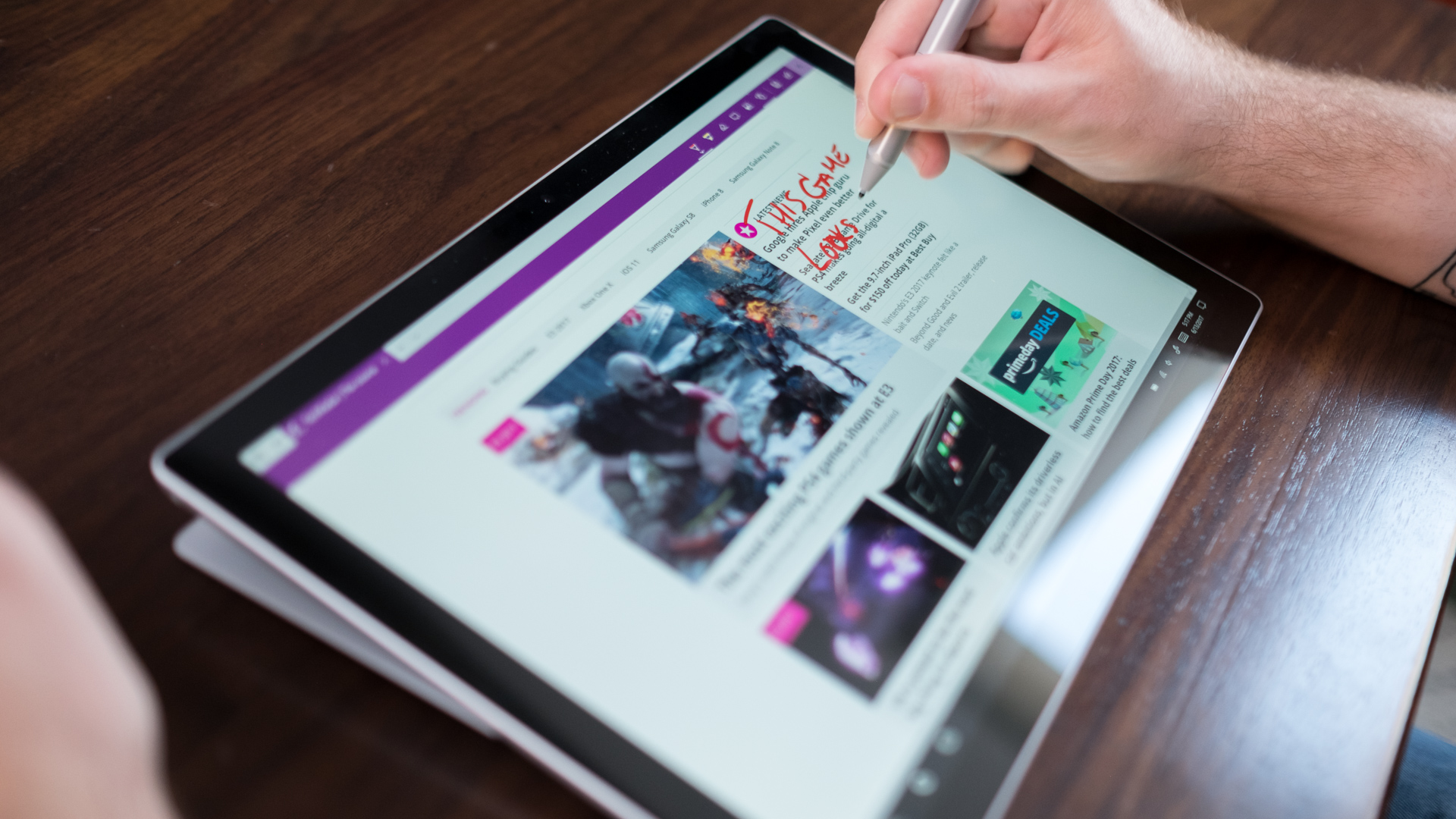
Another thing that’s new here is that the Pen is available in new appealing colors: platinum, black, cobalt blue and burgundy, meant clearly to match the available colors of new Type Covers.
There’s no question that both the new Surface Pen and Type Cover are well-deserving of their small price hikes. However, we’re still disappointed by the lack of bundles to save loyal customers some money for fully buying in on Microsoft’s products since day one.
First reviewed June 2017
Images Credit: TechRadar
- To save money on US and UK purchases, check out our Microsoft promo codes to get the best deals on Microsoft products.
- 1
- 2
Current page: Introduction, price, design and Surface Pen
Next Page Performance, battery life and verdict
Joe Osborne is the Senior Technology Editor at Insider Inc. His role is to leads the technology coverage team for the Business Insider Shopping team, facilitating expert reviews, comprehensive buying guides, snap deals news and more. Previously, Joe was TechRadar's US computing editor, leading reviews of everything from gaming PCs to internal components and accessories. In his spare time, Joe is a renowned Dungeons and Dragons dungeon master – and arguably the nicest man in tech.
